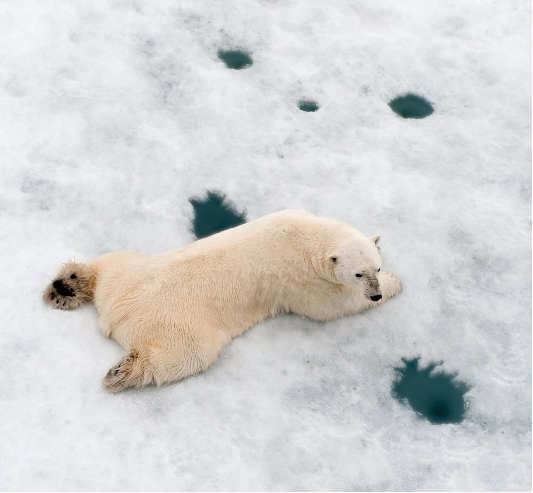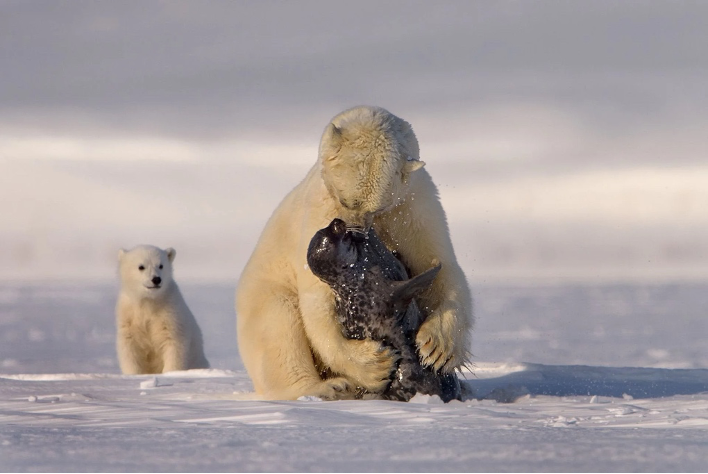
Speaking of the largest land carnivore in the world, many people may think of lions. However, polar bears, usually found throughout the Arctic region, are in fact the largest and the most carnivorous species on land. They are the top predators in the enormous marine ecosystem of the Arctic. Because of their huge bodies, they are in need of a diet that is high in fat. Hence, they live mainly on ringed seals and bearded seals. They also feed on other animals, including narwhales, beluga whales, and walruses, when they cannot capture any seals. People may wonder how polar bears hunt seals. Actually, the most common method for polar bears to hunt seals is called still hunting, and it only involves three main steps.

First, polar bears wait beside the breathing holes of seals. In autumn, each of the seals makes breathing holes, also known as aglu, in ice and keeps the holes open for the whole winter. Seals show up at one of the holes they cut to breathe approximately every 5 to 15 minutes. Polar bears rely on their keen sense of smell to locate seals and wait for seals to emerge from the holes. They lie in ambush near the holes as close as they can without making any sounds. They put their paws on the ice lightly and remain motionless. Polar bears are patient since they usually have to wait for hours or even days until they catch a seal.

Next, when seals show up, polar bears bite seals’ heads or bodies and drag them out of the water. When polar bears smell seals popping up for air in one of their holes, they creep slowly and silently toward the hole. Polar bears break the ice around the hole and drag the entire seal out of the sea. Polar bears tend to bite seals’ heads or their upper bodies to kill them first when seals are still in the holes in case seals escape back into the sea because seals are so slippery that they can get rid of polar bears’ control easily.

Finally, polar bears eat seals. After seals are dragged out on the ice, polar bears bite the seals several times to tear them into pieces. Polar bears prefer eating the skin and the blubber of seals since they contain a large amount of fat that polar bears require. Polar bears don’t always eat up the entire carcass of seals. Instead, they leave the remains to some scavengers that feed on the flesh of dead animals. After finishing their meal, polar bears clean their fur by swimming in the seawater nearby or rolling in the snow since their fur is stained with blood.
To sum up, there are three steps of polar bears’ still hunting strategy: waiting beside the breathing holes of seals, killing seals and dragging them out of the holes, and eating seals. Although polar bears’ hunting process seems to be cruel, it is important for maintaining a balanced ecosystem in the Arctic. Not only do polar bears hunt animals, but they also let other animals eat the leftover parts of their prey. Thus, polar bears play an important role in the Arctic ecosystem.
